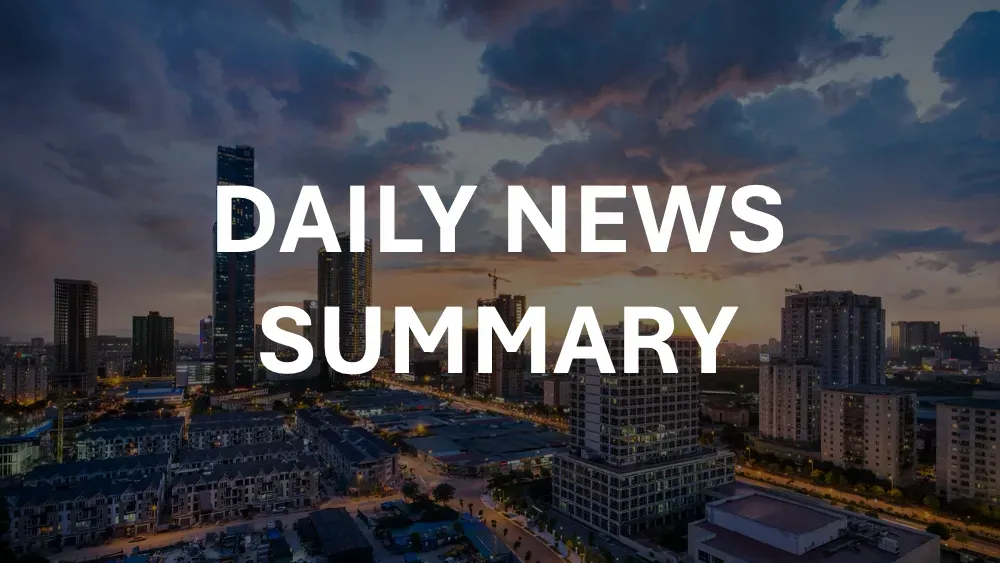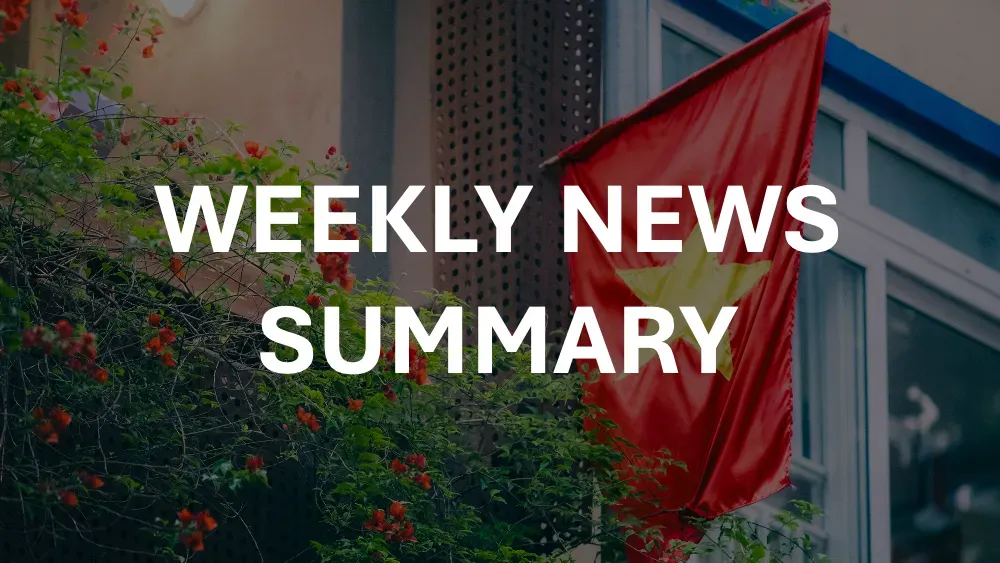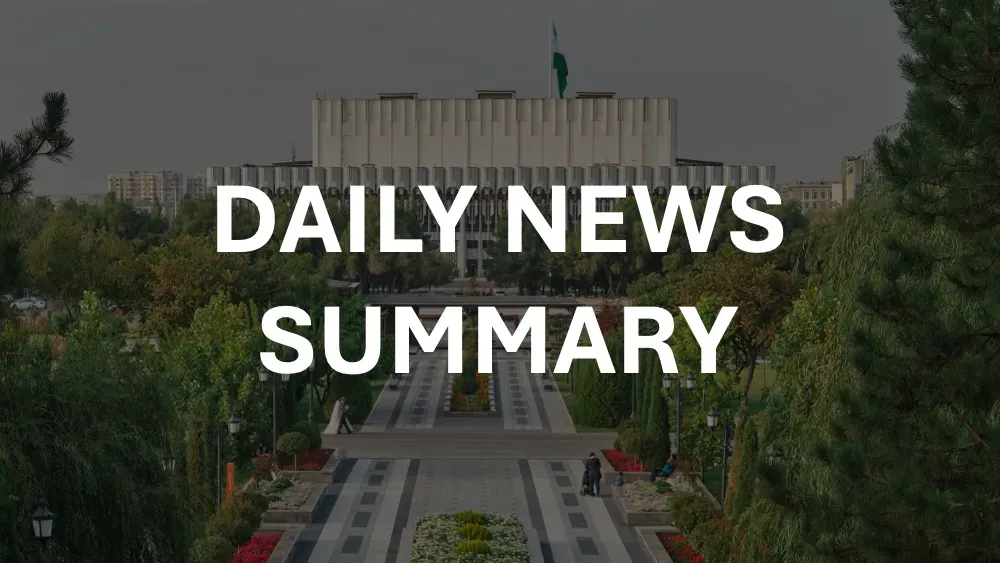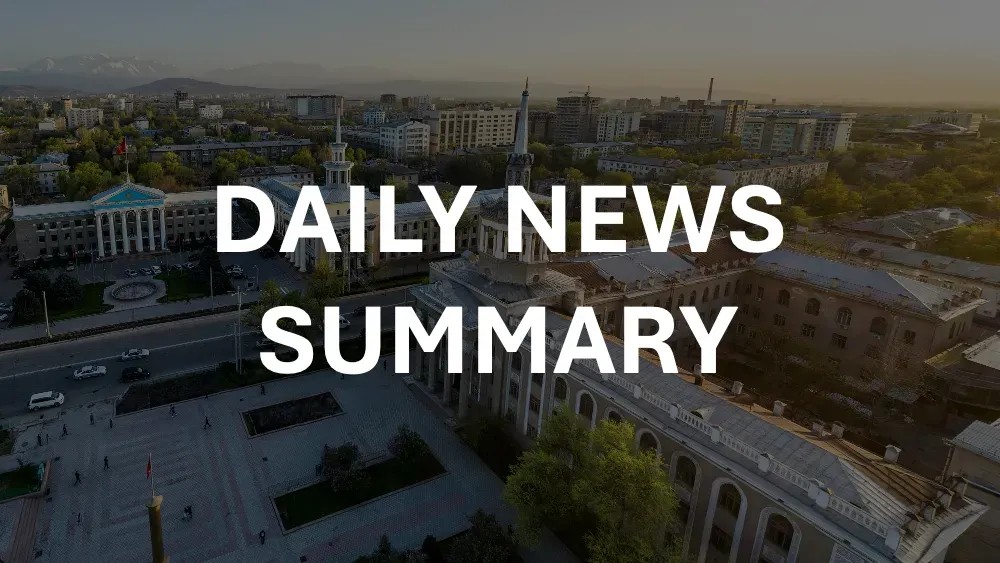📍 Get daily intelligence from Vietnam and Southeast Asia. Lexica News delivers local news that shapes global decisions—synthesized from local sources international media misses.
Vietnam attracted $38.23 billion in foreign direct investment commitments in 2024, marking a 4.4% increase from 2023. Yet beneath this headline figure lies a complex reality that international investors experience daily: a sweeping anti-corruption campaign has created bureaucratic paralysis, with government officials hesitant to approve projects due to investigation fears. The result is a striking contradiction—while Vietnam's FDI disbursement reached a record $25.35 billion in 2024, representing approximately 66% of committed capital, this achievement masks deeper implementation challenges. Foreign investors report navigating cumbersome procedures, weak intellectual property protections, and ministerial coordination failures that can delay or derail investments worth billions. Understanding this gap between attraction and deployment has become essential for international professionals evaluating Vietnam's investment climate in 2025.
Current Landscape: Record Attraction Meets Implementation Reality
Vietnam's foreign direct investment performance in 2024 presents a study in contrasts. The Ministry of Planning and Investment reports that 3,375 new projects received investment registration certificates with total registered capital of $19.73 billion. Manufacturing and processing dominated, attracting $25.58 billion—66.9% of total registered capital—while real estate captured $6.31 billion (16.5%). Among 80 investing countries, Singapore led with $6.26 billion in registered capital, accounting for 31.7% of new registrations.
These figures position Vietnam favorably in regional comparisons. Vietnam's FDI net inflows represented 4.2% of GDP in recent data, compared to Thailand's 1.9%, Indonesia's 1.7%, and Malaysia's 3.7%. The country's five-year plan (2021-2025) anticipates an average annual growth rate of 6.5% over the next decade, expected to be fueled by its robust manufacturing sector further integrated into international supply chains.
However, implementation tells a different story. Vietnam's anti-corruption campaign, launched in recent years and dubbed the "Blazing Furnace," has created unintended consequences for investment approvals. Both foreign investors and government agencies express concern regarding the speed and responsiveness of government decision-making. Government officials demonstrate hesitance to sign off on projects, reimburse state funding, and approve business licenses due to anxieties related to being investigated and wanting to avoid responsibility.
The economic impact manifests in concrete numbers. In 2023, Vietnam's disbursement rate of public investment reached only 73.5% of its planned target, with 63 out of 115 central agencies and localities having disbursement rates lower than the national average. At least $2.5 billion in foreign aid has reportedly been returned over the last three years, and another $1 billion could be similarly forfeited because of administrative paralysis. The government reportedly spent one-quarter less than its planned budget from 2021 to 2023—approximately $19 billion, equivalent to 4.3% of GDP.
Geographic distribution of FDI in 2024 reveals concentration in industrial hubs. Bac Ninh led the country with $5.12 billion in FDI, a 2.8-fold increase compared to 2023. Hai Phong and Ho Chi Minh City ranked second and third, attracting $4.94 billion and $3.04 billion respectively. This concentration reflects Vietnam's infrastructure development patterns and provincial-level variations in regulatory efficiency.
Documented Experiences: How Investors Navigate the System
Manufacturing investors report mixed experiences. Projects from semiconductor corporations including Amkor Technology, Foxconn, Goertek, and Victory Giant Technology proceeded in 2024, strengthening Vietnam's position as a manufacturing destination. These successes, however, occur alongside documented challenges that affect timeline predictability.
The legal approval process demonstrates the campaign's impact on deal flow. Foreign investors and government agencies both report that the anti-corruption campaign has slowed legal approvals and stymied deal flow. Investors report experiencing delays in document approval as officials adopt a risk-averse stance toward any decision that could later be scrutinized.
Real estate sector experiences reveal sector-specific patterns. The sector attracted US$5.63 billion—an 89.1% surge—as foreign investors capitalized on Vietnam's expanding urban centers and rising demand for industrial zones. Vietnam adopted a new Land Law in early 2024 that, together with updated Housing Law and Real Estate Business Law, aims to facilitate improved opportunities for investment in property, including by foreign investors. Implementation of these reforms occurs against the backdrop of cautious government decision-making.
Technology sector investors encounter a different set of challenges. While Vietnam attracted investments in high-tech manufacturing, semiconductors, and electronic components, skilled labor shortages constrain operations. In foreign direct investment enterprises typically requiring high skills, the share of qualified employees declined from 25.5% in 2021 to 21.69% in 2024. This downward trend signals a persistent gap in the quality of the labor force, especially in sectors driving innovation.
State-owned enterprise interactions shape investor experiences across sectors. SOEs account for 28% of GDP and contribute nearly 30% of the state budget. Entire sectors remain dominated by few SOE companies: energy (electricity at 87% and petroleum products at 84% of gasoline retail sale) and telecommunications (90% of mobile phone subscribers). This dominance creates limited linkages with the emerging private enterprise sector and affects market access for foreign entrants.
Stakeholder Realities: Government Data Versus Business Reports
Government statistics present an optimistic trajectory. The Ministry of Planning and Investment highlights the record $25.35 billion disbursement figure—a 9.4% increase over 2023—as evidence of improved implementation. Among 147 countries with valid investment projects in Vietnam, South Korea ranks first with total registered capital of $92 billion, followed by Singapore, Japan, Taiwan, and Hong Kong.
Business associations report different metrics. The U.S. State Department's 2024 Investment Climate Statement identifies significant challenges including widespread corruption, the entrenched position of state-owned enterprises in certain sectors, regulatory uncertainty in key sectors, a weak and opaque legal regime, poor enforcement of intellectual property rights, shortage of skilled labor, restrictive labor practices, and slow government decision-making processes.
Intellectual property protection presents a documented gap between regulation and enforcement. Vietnam has regulations to protect intellectual property rights, but enforcement is notoriously weak and IP abuse remains a problem. Vietnam does not have a strong record on protecting and enforcing intellectual property rights, with fractured authority and lack of coordination among ministries as primary obstacles, along with capacity constraints due to lack of resources and IP expertise. Vietnam has no specialized IP courts or judges and relies heavily on administrative enforcement actions that prioritize ending infringing behavior rather than imposing penalties, failing to deter widespread counterfeiting and piracy.
Workforce availability data reveals a fundamental mismatch. Vietnam's workforce reached 53 million people aged 15 and above by April 1, 2024, accounting for over 52% of the population. However, over 70% of the labor force consists of untrained workers, highlighting a significant gap between the quality of Vietnam's labor and current demand for a modern, adaptable workforce. By 2030, Vietnam's manufacturing sector faces a potential crisis with 2.1 million jobs unfilled.
Local business partners document regulatory complexity. Despite government efforts to cut business regulations, Vietnam still enforces nearly 16,000 business conditions, standards, and requirements, with many acting as barriers to business operations. Vietnam's regulatory system shows high variability in the time it takes to comply with regulations, increasing uncertainty for businesses and undermining efficiency and fairness.
Operational Context: Costs, Timelines, and Regulatory Processes
Investment approval timelines demonstrate considerable variation depending on sector, location, and project scale. The anti-corruption campaign's impact on approval processes means investors report unpredictable timelines as officials hesitate to approve important documents due to associated potential risks. This hesitance creates bureaucratic delays in government decision-making and disruptions in essential services.
Regulatory compliance costs reflect system complexity. The government introduced a five-year regulatory reform program to simplify or reduce business regulations and cut compliance costs by 20%. Implementation of these reforms occurs gradually, with provinces demonstrating varying levels of regulatory efficiency. Provinces with better regulations—such as lower costs, transparent procedures, fewer informal charges, and reduced bureaucracy—have higher rates of new firms entering markets.
Labor costs and availability create sector-specific constraints. Skilled labor shortages are acute in tech, manufacturing, and logistics, with 45% of FDI companies identifying shortage of skilled workers as a major challenge in 2024. The gap between academic training and labor market demand continues growing. While industries are increasingly driven by automation, AI, and sustainability, the majority of university students continue to pursue economics, finance, and law. This mismatch leads to a high rate of job mismatches, with approximately 30% of graduates working outside their trained fields.
Legal system characteristics affect dispute resolution and contract enforcement. The evolving nature of regulatory regimes and commercial law in Vietnam, combined with overlapping jurisdictions among government ministries, often results in lack of transparency, uniformity, and consistency in government policies. One of the primary obstacles is the lack of consistency across legal documents, as different laws may apply to the same investment project. Vietnam lacks an independent judiciary, and there is no separation of powers in the legal system.
Infrastructure access varies by location. Bac Ninh's ability to attract $5.12 billion—a 2.8-fold increase—reflects infrastructure advantages and provincial-level efficiency. Industrial hubs like Hai Phong face acute labor shortages despite infrastructure development. The situation varies by location, with recruitment challenges particularly affecting key manufacturing provinces.
SOE coordination requirements add complexity in dominated sectors. Foreign investment in SOEs became more attractive when Vietnam widened the door for foreign investment and hastened SOE equitization. However, foreign ownership in SOEs faces stricter restrictions, with foreign ownership ratio not exceeding the lowest level of business line requirements. The dominance of SOEs in sectors including extractive industries, electricity, telecommunication, and finance creates somewhat limited linkages with the emerging private enterprise sector.
Understand Vietnam Like an Insider
This analysis draws from extensive research, but the story continues to evolve daily. Lexica synthesizes breaking developments from dozens of Vietnamese news sources—from mining policy changes to local protests that never make international headlines.
Our daily intelligence briefs help executives, diplomats, and researchers track:
- Regulatory shifts affecting foreign investment
- Local opposition to development projects before they escalate
- Market dynamics that signal opportunity or risk
- Political developments that reshape the business landscape
Regional Comparison: Vietnam's Position Among ASEAN Peers
Vietnam's FDI performance positions it favorably in several metrics but reveals vulnerabilities in others. Vietnam's economic growth outpaced Thailand significantly, with Vietnam achieving growth rates above 5% while Thailand registered just 1.9% growth. The Philippines, Indonesia, Vietnam, and Malaysia were expected to see growth between 4.3% and 5.8% in 2024.
FDI attraction as percentage of GDP shows Vietnam's competitive position. Vietnam's 4.2% FDI-to-GDP ratio exceeds regional peers except Malaysia. In 2024, FDI to ASEAN increased 10% to $225 billion, powered by growth across Indonesia, Malaysia, Singapore, Thailand, and Vietnam.
Manufacturing competitiveness reveals both advantages and constraints. Vietnam captures increasing US import share as part of China+1 diversification strategies. However, fundamental capacity limits exist, with Vietnam's workforce only 7% of China's size. This constrains Vietnam's ability to absorb large-scale manufacturing relocation despite attractiveness for certain sectors.
Regulatory environment comparisons show mixed results. Vietnam's government introduced reform programs, but the country still enforces nearly 16,000 business conditions compared to more streamlined systems in Singapore and Malaysia. Thailand faces its own challenges, with Prime Minister Srettha declaring the economic situation a "crisis" as the country lagged behind regional peers in post-pandemic recovery.
Intellectual property protection standards lag regional leaders. Singapore and Malaysia maintain stronger IP enforcement frameworks and specialized courts. Vietnam's reliance on administrative enforcement actions that fail to impose meaningful penalties contrasts with judicial systems in more developed ASEAN economies.
Skilled labor availability presents a competitive disadvantage. While regional peers also face skills gaps, Vietnam's 70% untrained workforce percentage exceeds comparable figures in Thailand, Malaysia, and Indonesia. The projected 2.1 million unfilled manufacturing jobs by 2030 signals a more acute crisis than most regional competitors.
State-owned enterprise dominance in Vietnam exceeds most ASEAN peers. SOEs accounting for 28% of GDP and controlling 87% of electricity, 84% of petroleum retail, and 90% of telecommunications creates a more concentrated state presence than in Malaysia, Thailand, or Indonesia, where privatization progressed further.
Conclusion: Navigating Contradictions in Vietnam's Investment Climate
Vietnam's 2024 FDI performance—$38.23 billion in commitments and record $25.35 billion disbursement—documents continued investor interest in Southeast Asia's fastest-growing manufacturing economy. The country maintains structural advantages: favorable FDI-to-GDP ratio (4.2%), strategic position in China+1 supply chain diversification, and growing integration into international trade frameworks. Manufacturing sector dominance (66.9% of registered capital) and geographic concentration in developed industrial provinces reflect established strengths.
Yet the data equally documents significant implementation barriers. The anti-corruption campaign's impact—$2.5 billion in returned foreign aid, $19 billion in unspent budget allocations, cautious official decision-making—creates unpredictable approval timelines. Structural challenges persist: 70% untrained workforce, weak IP enforcement with no specialized courts, 28% GDP controlled by SOEs dominating key sectors, and nearly 16,000 business conditions despite reform efforts.
The gap between commitment and disbursement—roughly one-third of pledged capital not immediately deployed—quantifies these contradictions. Regional comparisons reveal Vietnam outpacing Thailand economically while lagging Singapore and Malaysia in regulatory sophistication and IP protection. The projected 2.1 million unfilled manufacturing jobs by 2030 signals workforce development as a critical constraint on future growth.
Several developments warrant monitoring. The continuation and evolution of the anti-corruption campaign will shape approval processes and official risk appetite. Implementation of the 2024 Land Law, Housing Law, and Real Estate Business Law reforms will indicate whether regulatory modernization translates into operational improvements. Provincial-level variations in attracting FDI—Bac Ninh's 2.8-fold increase versus other regions—may reveal best practices or structural advantages worth tracking. Workforce development initiatives addressing the skills gap will determine whether Vietnam can support higher-value manufacturing and technology investments.
International professionals evaluating Vietnam's investment climate in 2025 face a market characterized by genuine opportunities alongside documented implementation challenges. The $25.35 billion in 2024 disbursements demonstrates that investors successfully navigate the system. The question for new entrants becomes not whether Vietnam offers investment potential, but rather whether specific projects can accommodate the bureaucratic timelines, workforce constraints, IP protection limitations, and regulatory uncertainties that current data documents. Success appears to correlate with realistic timeline expectations, provincial-level due diligence, and workforce strategies that account for Vietnam's 70% untrained labor reality.
Frequently Asked Questions
What is Vietnam's actual FDI disbursement rate compared to commitments?
Vietnam disbursed $25.35 billion in 2024 from $38.23 billion in total FDI commitments, representing approximately 66% disbursement rate. This marks a 9.4% increase over 2023's disbursement but indicates that roughly one-third of committed capital does not immediately translate into deployed investment. The gap reflects a combination of normal implementation timelines for large projects and specific delays related to approval processes. For comparison, the public investment disbursement rate reached only 73.5% of planned targets in 2023, suggesting broader implementation challenges beyond FDI alone.
How does Vietnam's anti-corruption campaign specifically affect investment approvals?
The campaign, dubbed the "Blazing Furnace," creates a risk-averse environment where government officials hesitate to approve documents due to investigation fears. Concrete impacts include at least $2.5 billion in returned foreign aid over three years and another $1 billion at risk of forfeiture due to administrative paralysis. The government spent approximately $19 billion less than planned budget from 2021-2023 (4.3% of GDP). Investors report unpredictable approval timelines and delays in project sign-offs as officials adopt cautious stances toward any decision that could later face scrutiny. The campaign's continuation appears certain, with the new leadership pledging to prioritize anti-corruption efforts even if the economy suffers in the short term.
Which sectors face the most severe skilled labor shortages?
Technology, manufacturing, and logistics report the most acute shortages, with 45% of FDI companies identifying skilled worker shortage as a major challenge in 2024. In FDI enterprises requiring high skills, the share of qualified employees declined from 25.5% in 2021 to 21.69% in 2024. Over 70% of Vietnam's 53 million-person workforce consists of untrained workers. The manufacturing sector faces a projected 2.1 million unfilled jobs by 2030. The gap stems from misalignment between academic training and market demand—most university students pursue economics, finance, and law while industries need automation, AI, and technical skills. Approximately 30% of graduates work outside their trained fields.
How does intellectual property enforcement work in practice?
Vietnam has IP regulations but enforcement remains notoriously weak. The country lacks specialized IP courts or judges, relying instead on administrative enforcement actions that prioritize stopping infringing behavior rather than imposing penalties. This approach fails to deter widespread counterfeiting and piracy. Primary obstacles include fractured authority and lack of coordination among ministries, along with capacity constraints from insufficient resources and IP expertise. Foreign investors report IP abuse as an ongoing problem. Weak IP protection has long been cited as a barrier preventing global firms from cooperating with local Vietnamese companies, limiting technology transfer and higher-value partnerships. The system's weaknesses affect sectors from pharmaceuticals to software, with administrative remedies providing limited recourse compared to judicial systems in more developed markets.
What role do state-owned enterprises play in limiting foreign investment access?
SOEs account for 28% of GDP and dominate specific sectors: electricity (87%), petroleum retail (84%), and telecommunications (90% of mobile subscribers). This concentration creates limited linkages with the emerging private sector and restricts market access for foreign entrants. SOE dominance in extractive industries, electricity, telecommunication, and finance constrains opportunities for foreign investors seeking to enter these sectors. While Vietnam widened doors for foreign investment in SOEs through equitization programs, foreign ownership faces stricter restrictions, with foreign ownership ratios not exceeding the lowest level of applicable business line requirements. The entrenched position of SOEs represents one of the significant investment climate challenges that international investors navigate when evaluating market entry strategies.
How do provincial-level variations affect investment location decisions?
Geographic concentration of FDI reveals significant provincial differences. Bac Ninh attracted $5.12 billion in 2024—a 2.8-fold increase—while Hai Phong received $4.94 billion and Ho Chi Minh City $3.04 billion. These variations reflect differences in infrastructure development, regulatory efficiency, and labor availability. Provinces with better regulations—lower costs, transparent procedures, fewer informal charges, reduced bureaucracy—demonstrate higher rates of new firms entering markets. Industrial hubs like Hai Phong face acute labor shortages despite infrastructure advantages. The high variability in time required to comply with regulations increases uncertainty for businesses and undermines efficiency and fairness. Location decisions require detailed provincial-level assessment rather than relying solely on national-level policies and statistics.
What timeline should investors expect for major project approvals?
Approval timelines demonstrate considerable unpredictability due to the anti-corruption campaign's effects. Officials' hesitance to approve important documents creates bureaucratic delays in government decision-making and disruptions in essential services. Both foreign investors and government agencies express concern regarding the speed and responsiveness of government decision-making and approvals. The government introduced a five-year regulatory reform program aiming to cut compliance costs by 20%, but implementation occurs gradually with provincial variations. Vietnam's regulatory system shows high variability in time required to comply with regulations, increasing uncertainty. Investors report that the overlapping jurisdictions among government ministries, combined with evolving regulatory regimes, results in lack of transparency, uniformity, and consistency in government policies. Planning for extended approval timelines and building relationships with provincial authorities become essential components of investment strategy.
Track Vietnam with Local Intelligence
The rare earth story exemplifies why local sources matter. While international media reports MOUs and ministerial visits, Vietnamese outlets cover the community protests, water disputes, and regulatory changes that actually determine project outcomes.
Lexica delivers what you're missing:
- Daily briefs at 7AM Hanoi time covering 40 top stories from politics to economics
- Full-text synthesis from sources in Vietnamese
- Searchable archive to track how today's announcements connect to yesterday's promises
- Multi-country coverage across Southeast Asia for regional context
Whether you're evaluating investment opportunities, monitoring supply chain risks, or analyzing geopolitical developments, local intelligence reveals what international headlines obscure.







